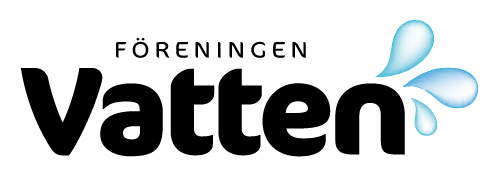BEGREPPSMÄSSIGA AVRINNINGSMODELLER TILLFÖRLITLIGA VERKTYG I VATTENPLANERINGEN? / Conceptual runoff models – reliable tools in water management?
Available observations are often not suffcient as a basis for decision making in water management. Conceptual runoff models are frequently used as tools for a wide range of tasks to compensare the lack of measurements, e.g. to extend runoff series, compare design floods and predict the leakage of nutrients or the effects of a climatic […]
BIOLOGISK AVLOPPSRENING En utredning om kvävereducering i avloppsvatten / Biological Wastewater Treatment An investigation of nitrogen reduction methods
The eutrophication of the Balric Sea has resulted in a decision in the Swedish Parliament that every wastewater treatment plant on the Baltic coast with more than 2000 customers has to have a nitrogen reduction system. This investigation compares the three methods for nitrogen reduction, that are in full use in Sweden: constructed wetlands, fluidized […]
URBAN SNOWMELT PROCESSES: AN OVERVIEW FOR MODELLERS
The governing processes involved in both urban and rural hydrology are the same, but the climatic and surface conditions in the urban environment are different, hence, snowmelt and runofFgeneration also differ. However, snowmelt is a neglected part of urban hydrology. Indeed, urban runoffmodels and drainage systems have been developed for rainfall events. This paper discusses […]
EVOLUTION OF WASTEWATER TREATMENT IN FINLAND
This paper is based on several studies on the long-term development of water and sanitation services in Finland and presents the evolution of domestic wastewater treatment in Finland in the 20th century. It shows that the first phase of wastewater treatment development took almost 60 years; thereafter the systems expanded rapidly over two decades to […]
SMÅ AVLOPP FÖR KRETSLOPP – SORPTION TILL REAKTIVA FILTER / Small-scale wastewater cycling – sorption to reactive filter media
Reactive filter material, sorbents, can be used to remove phosphorus (P) from wastewater through sorption processes. The technique implies that the wastewater pass a fdter that is incorporated in a soil bed or a constructed wetland. When P-saturation is achieved, the sorbent can be recycled to agriculture, since the sorbed phosphorus is available for plant […]
BIOLOGISK FÖRBEHANDLING MED LÅNGSAMFILTRERING / Biological pretreatment with slow sand filtration
The focus on environmental aspects in the society has increased the strive to find sustainable sysrems for drinking water production. This has lead to a greater inrerest in biological filtration, for example slow sand filtration (SSF). Biological pretreatment of raw water might reduce the need for chemicals in the following treatmem steps, with reduced sludge […]
VATTENPROJEKTET I NATURVÅRDSVERKET / Water management project at the SEPA
The article gives a presentation of the Swedish environmental protecaon agency‘s project on Water management, a project concerning warer management and the implementation process of the EG Water framework directive on water policy. The overall aim of the project is to enhance the process ofimplementation, doing so by trying to find our difficulties concerning our […]
VATTENPLANERING – PÅ RIKTIGT? / Water management – in reality?
In a not too distant furure we will be working wiih Water management in Sweden, covering all river basin districts, with access to steering instrumenrs enabling us to achieve the decided objeaives. For decades people with specific interest in water management in Sweden have been trying to use water management in physical planning and environmental […]
A MODEL SYSTEM FOR ADVANCED MANAGEMENT OF ACCIDENTAL TOXIC SPILL IN DRINKING WATER SOURCES: LAKE VOMB CASE STUDY
A model system for advanced management of accidental toxic spill in drinking water sources is described. The system is based on the 1-D river model RIVTOX and 3-D lake model THREETOX. The model system was applied to the Lake Vomb catchment, which is located in the south of Sweden and from which approximately 400 000 […]
CHEMICAL COMPOSITION OF SURFACE WATERS AND RUNOFF OF DISSOLVED SUBSTANCES FROM THE TERRITORY OF LATVIA
The relationships between water composition, formation factors and human impact were studied. Runoff was dependent on hydrological factors, but differing levels between eastern and western Larvia. Since knowledge of the seasonal dynamics of nutrient concentrations, and of the nutrient sources and sinks are especially important, the specific loads from different parts of Larvia were evaluaied. […]
